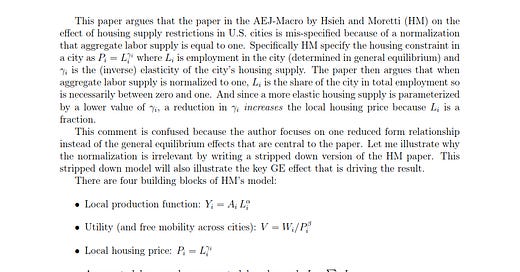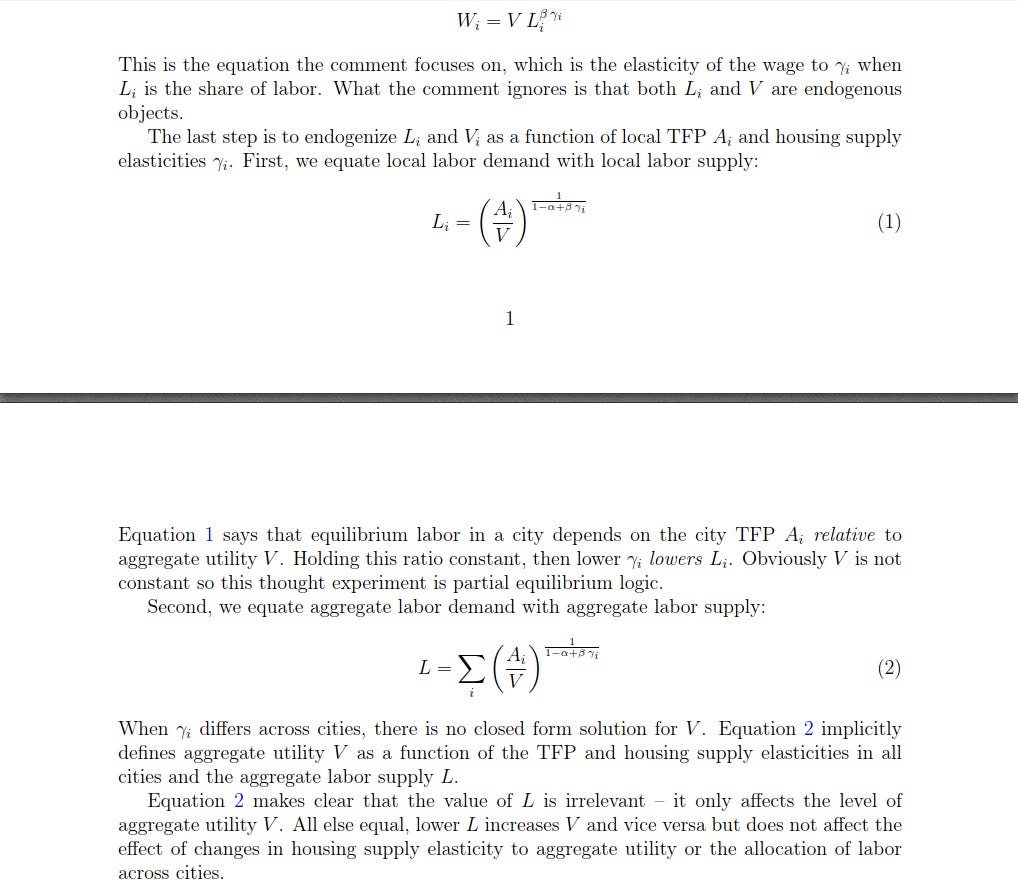Back in 2021, I noticed some large apparent errors in Chang-Tai Hsieh and Enrico Moretti‘s “Housing Constraints and Spatial Misallocation” (American Economic Journal: Macroeconomics, 2019). Both authors quickly acknowledged that I was correct.
Recently, Brian Greaney of the University of Washington posted a totally new critique of Hsieh-Moretti. Greaney’s piece has been getting considerable attention. But this time, the original authors are not conceding error so easily. Hsieh has kindly given me permission to reprint his negative referee report, and here it is. Since there’s a lot of math, I’m screencapping it. Or read the pdf if you prefer.
Subscribe to Bet On It
Caplan and Candor











Let's just do some basic napkin math. Let's say that if housing supply were less constrained, 5% of Americans would move to a location where they would make 5% more. 5% * 5% = 0.25%. So it is not totally out of the realm of possibility that less constrained housing markets would increase GDP by 0.25%. And yet the critique confidently reports a 0.02% change in GDP. Seems like the critique is off in in the confidence in its result by... an order of magnitude? Keep in mind too that the initial paper was talking about an impact on GDP over time where the growth effects from a more optimal policy compound over time.
Look, my recollection is that I had a hard time reading through the original paper and don't really understand how they identify their general equilibrium model in data and why they think it's plausibly identified, but the napkin math prior here is that confidently asserting that constraints on housing only impact GDP by 0.02% is absurd.